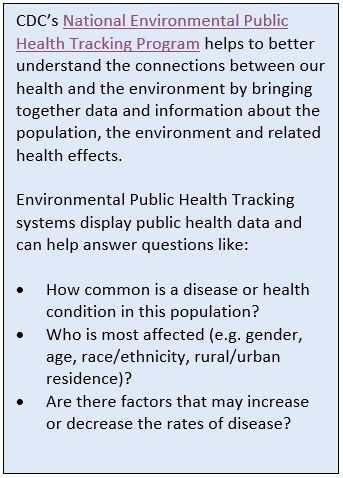10 Health Literacy Tips for Reporting Data
Posted on by
We live in a complex world. Just as humans have left an impact on the environment, the environment also leaves an impact on us. Being exposed to certain physical and social environmental factors, like chemicals in the water, secondhand smoke, or poverty, can affect our health.
Understanding oral health data in Minnesota
The Minnesota Department of Health (MDH) Oral Health Program is committed to communicating data in a way that is understandable and easy to use. As part of the CDC’s Tracking Program, the MN Tracking Program allows us to do that by hosting our Minnesota Oral Health Statistics System (MNOHSS) data on the Minnesota Public Health Data Access portal.
The MN Data Access portal allows users to quickly find, interact, download, and visualize data through charts, infographics and maps. We also have been able to shed light on oral health disparities and use chronic disease data about diabetes, heart disease and cancer from the portal to look at shared risk factors with dental disease.
Oral health is key to overall health and the MN Public Health Data Access portal has brought greater visibility to this hidden chronic disease.
Taking health literacy into account
Nearly 90% of people struggle to understand health communication messages. This means that the data and reports we publish from our data tracking systems should take health literacy into account and provide health information that is easy to find, understand, evaluate, communicate, and use. Based on my experience, I have compiled 10 easy ways you can consider health literacy when you’re reporting data.
- Consider audience and outcome. Think about what actions or interventions you are hoping to achieve from your data and who needs to know about the data in order to make those changes. Your data should be presented in a way that is understandable, relevant and action-oriented for your target audience. This could include the media, policymakers, educators, researchers, students, clinicians and other health professionals, as well as the general public.
- Use storytelling to convey key messages. Think about your favorite novel, television show, or website. What keeps your attention and motivates you to tune in for more? I am learning a lot from communications and behavior change theories and from professionals such as Dr. Neil deGrasse Tyson, Alan Alda, and Dr. Randy Olson who are able to bring science to life through storytelling. Communicating data is a science, as well as an art. We can all take cues from Hollywood’s narrative structure to tell compelling stories that humanize our data and drive action.
- Reach people where they are. Research your target audience to find the best outreach strategies. You will need to use different strategies depending on their existing level of knowledge, motivating factors, and whether or not they are information seekers and early adopters. Does your audience prefer to receive information verbally (e.g. town hall meeting, webinar, television, radio or podcast), in writing (e.g. website, data brief, social media), or both? As an example, the Minnesota Department of Health’s MN Tracking Program developed a social media campaign that communicates data on the MN Public Health Data Access portal — Land of Healthy Kids — targeting public health professionals, schools, parents/guardians and caregivers of school age children.
- Make data digestible. When communicating your findings present data in bites, snacks, and meals. Not everyone who looks at your data is going to have the time or expertise to read your entire report so you need to make sure they can find information that is relevant and understandable.
- Bite: Use anchors and headers to help users quickly find data and information. Brief headers that use a declarative statement to interpret a chart or map helps with data literacy.
- Snack: Develop simple charts and maps with clear titles, legends, and axes. Charts and maps should be standalone features that do not require additional text to understand. They should communicate the who, what, where and when of the data you are presenting. Do not overwhelm viewers with p-values and confidence intervals. These can be added to accompanying tables and information pages.
- Meal: Tables, data downloads, and information pages should be added for researchers, health professionals, and those who want to dig deeper into the data. You might include additional information about study design, sample and weighting methodologies, indicator definitions, sample or population size, confidence intervals, unreliable estimates or data suppression to help this audience to further analyze and interpret the data.
- Numbers count. Adults in the United States have lower numeracy skills than adults in other developed countries. Many do not understand percentages or ratios, have difficulty making comparisons (across years, geographies, or against a target goal), and do not know the difference between absolute versus relative risk. Dashboards, infographics or icon arrays, risk tables, ladders and scales help to visually display data, the magnitude of effect or risk, and can help individuals make comparisons if presented on the same scale.
- Think about accessibility. To ensure everyone has the same access to your data, familiarize yourself with 508 Standards for Electronic and Information Technology. People with visual, auditory, and motor skill impairments may not be able to access information on the web, even using assistive devices. Simple modifications can make a big difference, such as:
- Reduce the number of mouse clicks required to access the information.
- Caption all videos, podcasts and sound files.
- Add tables and ALT text to charts and maps.
- Ensure sufficient color contrast. Tools such as ColorBrewer – Color Advice for Cartography and Coblis – Color Blindness Simulator can help you decide color schemes that are colorblind safe and printer-friendly.
- Report data in meaningful, culturally, and linguistically appropriate way. Analyzing and presenting data by geography, sexual orientation and gender identity (SOGI), age, race/ethnicity, preferred language, disability, and chronic disease status helps to identify health disparities and prioritize resources. This should be done in concert with the affected community to ensure that data is collected, analyzed, interpreted, and reported accurately, meaningfully and in a culturally and linguistically appropriate way.
- Conduct audience testing. The best way to ensure your data can be found, accessed, and understood is to test your communication product with your target audience. Generally 5-8 people will suffice. The key is to make sure the group is representative.
- Usability testing identifies whether or not your audience can find data and information, successfully complete specified tasks, and helps you to understand how your audience searches for information or completes tasks. You can also observe how long it takes them to complete tasks and determine ways to modify or enhance user experience.
- Accessibility testing determines whether or not online content is 508 compliant. Using a screen reader or only a keyboard (not mouse), can you still navigate and access web content? Consider testing products with individuals who use assistive devices.
- Health literacy testing identifies whether or not your data and information is understandable. Can your audience easily interpret the data in charts, tables, and maps? Is your narrative description of the data clear?
- Evaluate your work. To improve future communication about data, you should always evaluate your work.
- Web and digital analytics applications allow you to monitor audience reach and user engagement. They can help you set goals, tell you what search engine terms are common, and whether or not users are accessing your page directly or are being directed from a different website. It can also tell you which pages are popular and which are not. Infrequent traffic or high bounce rates on a particular page may indicate lack of interest, lack of awareness, or perhaps a usability or health literacy issue.
- Track different modes of communications. How many presentations, webinars, social media posts, etc. have you delivered in a specified amount of time? Who was the audience? Are there groups you have not yet reached?
- Monitor how your data is being used. User surveys, in-person interviews, and external communications such as articles, reports, website links, and social media posts can tell you how your data is being used and if it is being used appropriately.
- Share best practices. Talking and listening to others is a great way to discuss new methods, share resources, and spark inspiration.
- Join professional organizations and working groups on surveillance, epidemiology, and health literacy and discuss the importance of data literacy.
- Engage with programs, like CDC’s Tracking Program, who use health literacy and numeracy principles to inform how they communicate about data.
Communicating data can be difficult and takes time and practice. But remember, we all appreciate clear communication. When you address health literacy, you improve data quality and consumer satisfaction and make data truly accessible to everybody.
The Minnesota Public Health Data Access portal is managed by the Minnesota Environmental Public Health Tracking Program (MN Tracking). MN Tracking is part of the CDC’s National Environmental Health Public Health Tracking Program, which collects, integrates, and analyzes environmental hazard and public health data from a nationwide network of partners.
Learn more
- Minnesota Department of Health: Minnesota Environmental Public Health Tracking Program
- CDC: National Environmental Health Public Health Tracking Program
- CDC: Health Literacy
- Minnesota Department of Health: Oral Health Program
- Blog: Fishing for Health Data
The Communication Research and Evaluation blog series highlights innovative research and evaluation methods used at CDC to improve behavior change campaigns.
Posted on by

